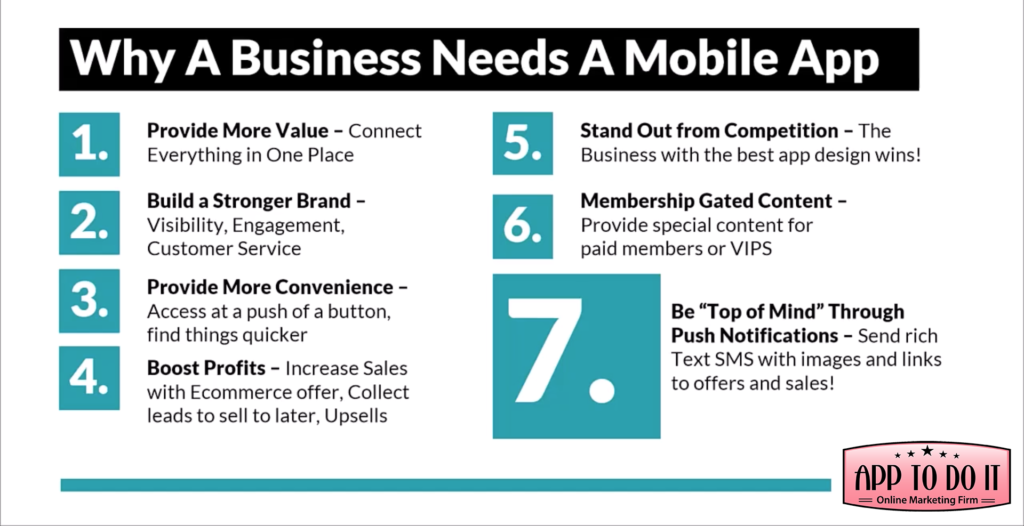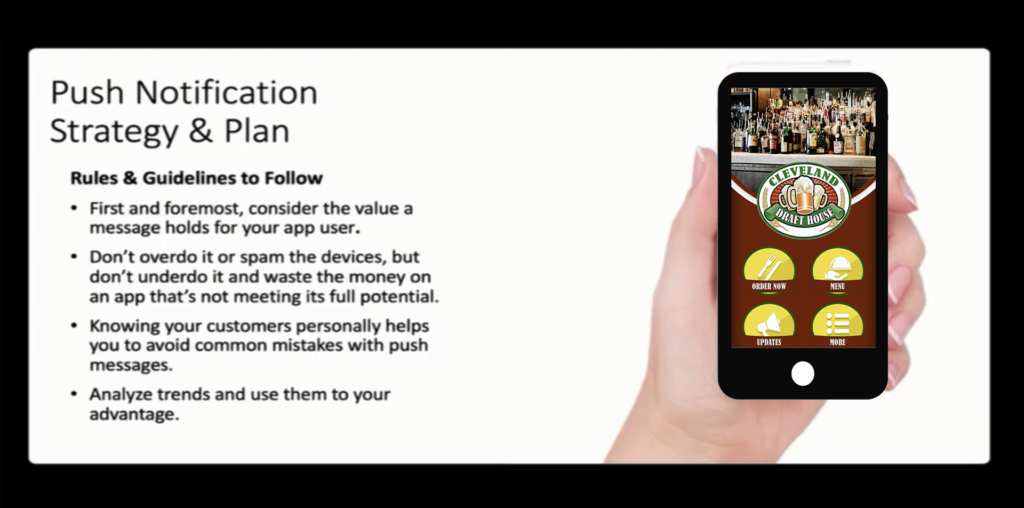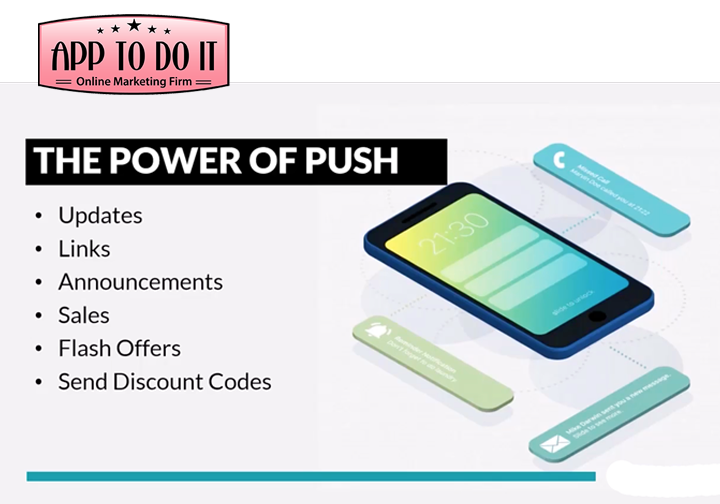In today’s fast-paced digital landscape, businesses are constantly seeking innovative ways to connect with their audience and streamline their operations. One powerful tool that has emerged as a game-changer in this pursuit is mobile apps. These pocket-sized powerhouses offer a plethora of benefits, enabling businesses to establish stronger customer relationships, enhance brand loyalty, and boost their bottom line. Among the many advantages mobile apps bring, the capability of push notifications stands out as a potent way to engage users effectively. In this article, we delve into the virtues of mobile apps for businesses, with a special focus on the strategic use of push notifications. Furthermore, we explore the processes of getting an app approved through Apple’s App Store and Google Play Store, the two major platforms that dominate the mobile app market.

The Virtues of Mobile Apps for Businesses:
- Enhanced Customer Engagement: Mobile apps offer businesses a direct channel to interact with their customers. Unlike websites, apps are always present on users’ devices, allowing companies to send timely updates, personalized offers, and relevant content. This continuous engagement fosters a sense of connection and loyalty, making customers more likely to choose the app as their go-to resource.
- Brand Reinforcement: Mobile apps provide a focused space for businesses to showcase their brand identity. The design, user interface, and overall experience can be tailored to align with the brand’s values and aesthetics, ensuring a consistent and memorable impression on users.
- Increased Accessibility: Apps reside on users’ home screens, ensuring easy access to a business’s products or services. This accessibility encourages frequent usage and eliminates the need for users to remember website URLs or search for information anew each time they wish to engage with the brand.
- Personalized User Experience: With data-driven insights, mobile apps can personalize content and recommendations based on user behavior and preferences. This level of personalization enhances user satisfaction and increases the likelihood of conversion.
- Streamlined Purchasing: For businesses with e-commerce capabilities, apps simplify the purchasing process. Features like saved payment information and one-click ordering enhance user convenience, leading to higher conversion rates.
- Utilization of Device Capabilities: Mobile apps can leverage the full range of a device’s features, such as cameras, GPS, and sensors. This allows for creative and interactive functionalities, enhancing user engagement and the overall app experience.
- Offline Accessibility: Many mobile apps offer offline functionality, allowing users to access certain features and content even without an internet connection. This feature can be a significant advantage in scenarios where internet connectivity is unreliable.
Harnessing the Power of Push Notifications:

Push notifications are a standout feature of mobile apps that can deliver immense value when used strategically. These are short messages that pop up on users’ screens, even when they are not actively using the app. Here’s how push notifications can benefit businesses:
- Instant Communication: Push notifications enable real-time communication with users. Businesses can send out updates, promotions, reminders, and other time-sensitive information instantly, ensuring that users are always in the loop.
- Increased Engagement: Well-crafted push notifications can pique users’ interest and entice them to open the app. This immediate engagement can lead to higher user retention rates and increased app usage.
- Personalization and Targeting: Using data analytics, businesses can segment their user base and send highly targeted push notifications. Personalized messages that align with users’ preferences and behaviors are more likely to be well-received.
- Re-Engagement Tool: Push notifications are an effective way to re-engage users who haven’t interacted with the app in a while. By offering special discounts, relevant content, or enticing updates, businesses can bring inactive users back into the fold.
- Customer Relationship Building: Consistent and valuable push notifications can help foster a sense of connection between businesses and their customers. By providing helpful information, recommendations, and offers, businesses can position themselves as reliable resources.
Navigating App Approval: Apple App Store and Google Play Store:
While the benefits of mobile apps are abundant, getting an app approved and listed on the major app stores, namely the Apple App Store and Google Play Store, is a crucial step that requires attention to detail and adherence to guidelines.
Apple App Store:
Apple’s App Store is known for its stringent review process, which is designed to maintain a high standard of quality and security for users. Here’s how to navigate the approval process:
- Developing in Line with Guidelines: Apple provides a comprehensive set of guidelines that developers must adhere to. These cover design, functionality, content, and security. It’s crucial to thoroughly review these guidelines and ensure your app meets all the requirements.
- Testing and Bug Fixing: Thoroughly test your app across various devices to identify and fix any bugs or glitches. Apple is strict about app stability and performance.
- User Privacy: With the increasing focus on user privacy, ensure that your app collects and uses data in a transparent manner. Obtain necessary permissions and clearly communicate your data practices to users.
- App Store Connect: Submit your app for review through the App Store Connect portal. Provide accurate and detailed information about your app, including its functionality, content, and intended audience.
- Wait for Review: Apple’s review process can take some time, usually a week or more. Be patient and prepared to make any necessary changes based on their feedback.
Google Play Store:
Google Play Store has a more open review process compared to Apple’s, but it still maintains guidelines to ensure a positive user experience:
- Content and Functionality: Review Google’s policies for content, functionality, and design. Your app should not violate any of these policies, which cover areas such as violence, adult content, and intellectual property.
- Quality Assurance: Like Apple, Google emphasizes app quality. Thoroughly test your app to ensure it functions as intended and doesn’t crash or misbehave on different devices.
- App Release: Upload your app’s APK (Android Package) to the Google Play Console. Provide accurate details about your app, including its title, description, screenshots, and categorization.
- Policy Compliance: Google will review your app to ensure it complies with their policies. This includes verifying that your app’s content is appropriate and its functionality is transparent to users.
- Review Time: Google’s review process is generally quicker than Apple’s. Your app can be reviewed within a few hours to a day. If there are issues, you’ll receive feedback for adjustments.
In conclusion, mobile apps offer an array of virtues for businesses, from enhancing customer engagement and brand loyalty to streamlining purchasing and offering personalized experiences. Push notifications, in particular, can be harnessed strategically to drive user engagement and foster meaningful connections. However, to fully reap the benefits, businesses need to ensure their apps meet the standards of major app stores.
The approval processes for the Apple App Store and Google Play Store demand careful attention to guidelines, testing, and compliance. While the processes might seem daunting, they are essential for maintaining a high-quality app ecosystem and ensuring a positive user experience. By combining the virtues of mobile apps with the power of push notifications and navigating the approval processes effectively, businesses can unlock the immense potential of this dynamic digital tool, driving growth and success in an increasingly mobile-centric world. Contact App To Do It at 847-910-2266 for a quote on a mobile app for your business.



Facebook
Youtube
LinkedIn
Tumblr